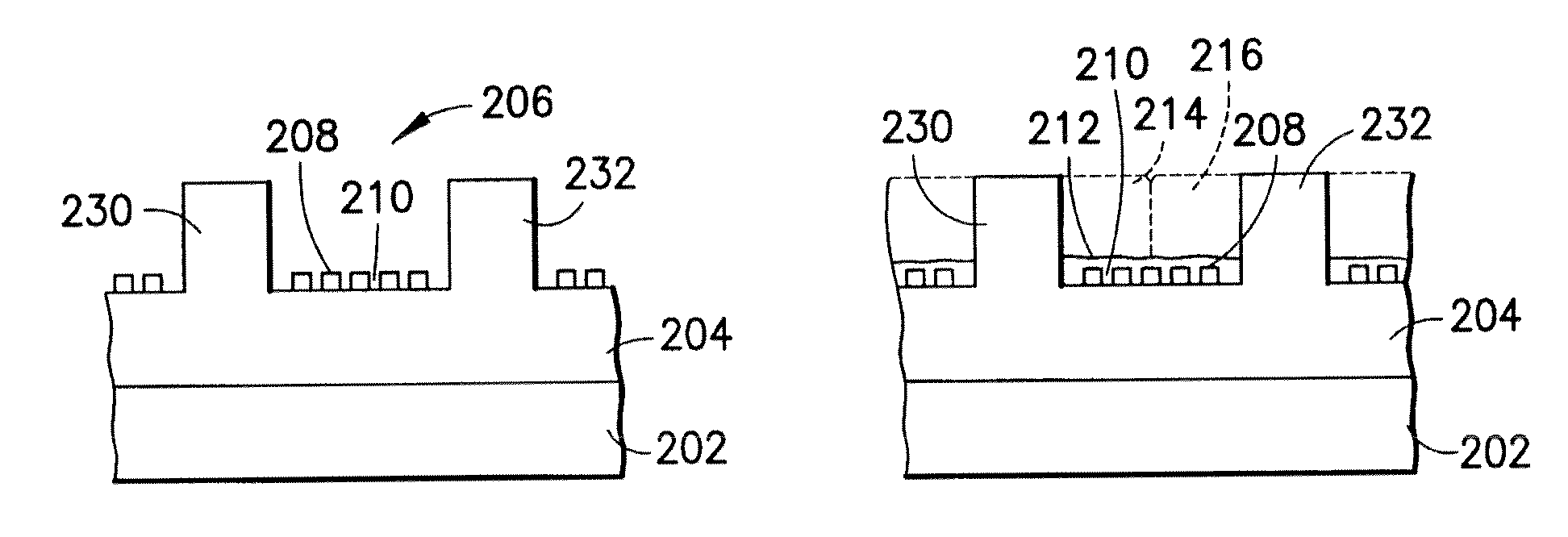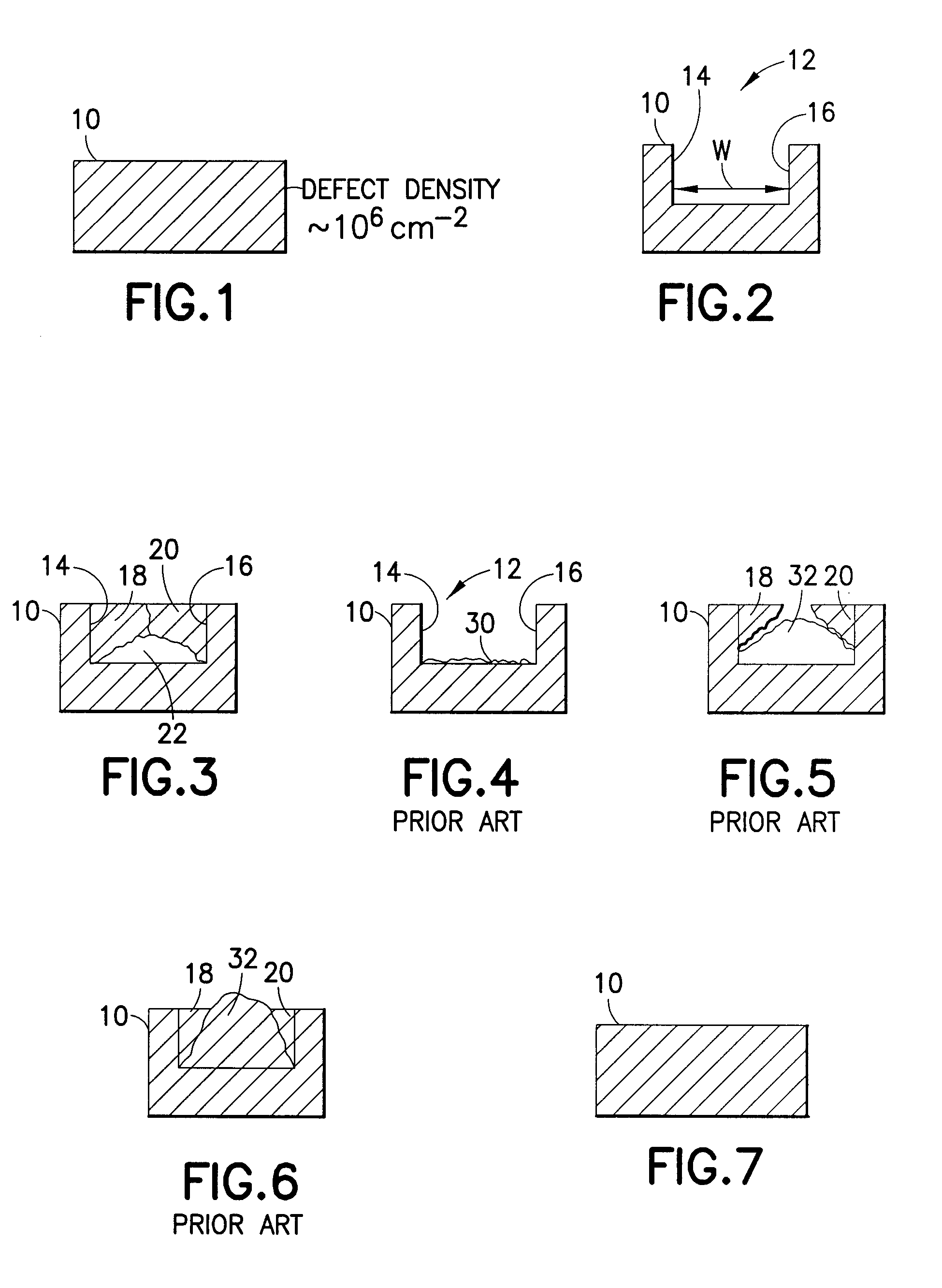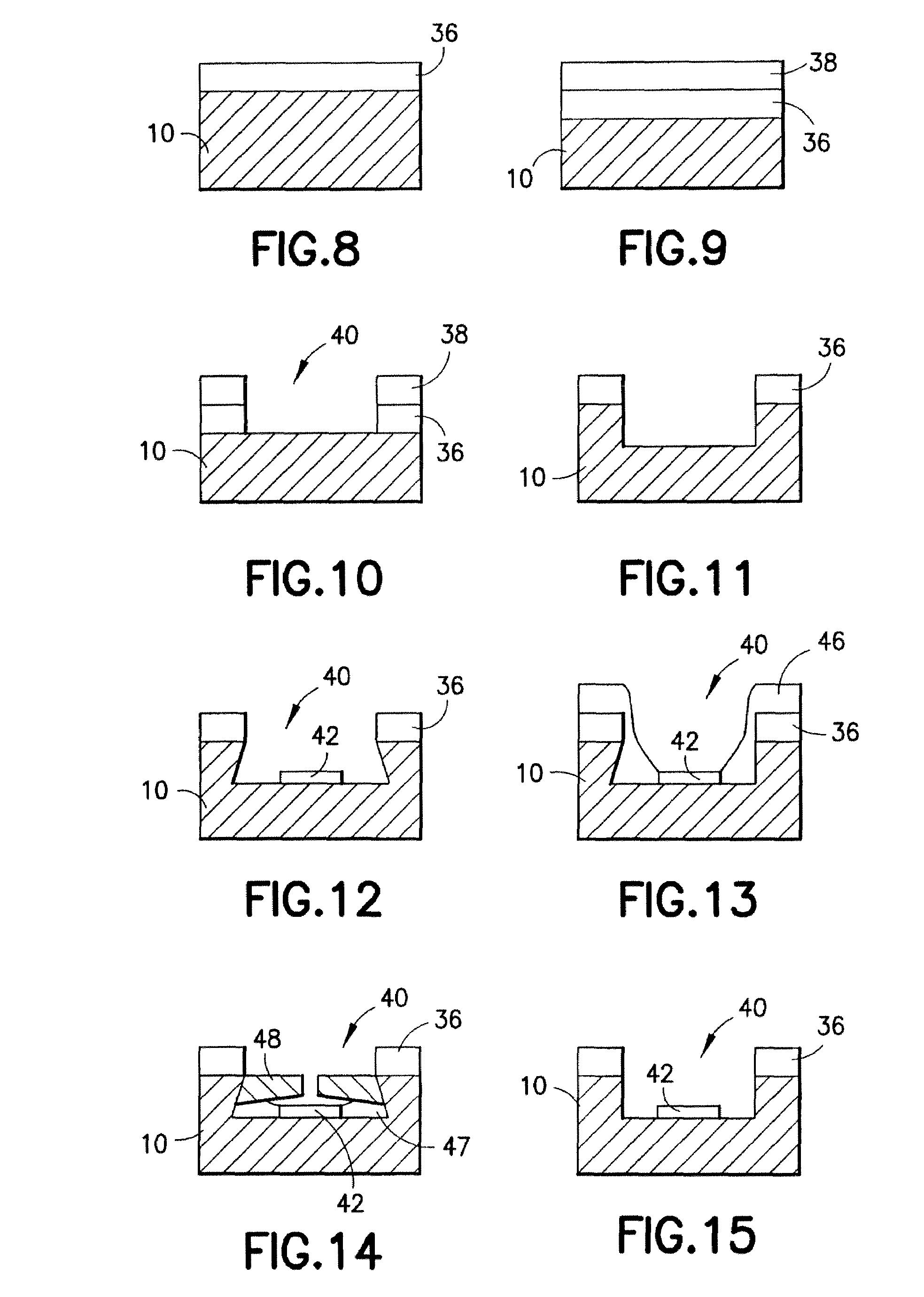Pendeo epitaxial structures and devices
a technology of epitaxial structure and device, applied in the direction of basic electric elements, semiconductor devices, electrical apparatus, etc., can solve the problems of reducing the scope of process conditions that are available for lateral growth, and limiting the available temperatur
- Summary
- Abstract
- Description
- Claims
- Application Information
AI Technical Summary
Benefits of technology
Problems solved by technology
Method used
Image
Examples
example 1
Pendeo Epitaxy with 15 Micron Wide Reduced Defect Density Stripes Formed on GaN Substrate
[0106]A free-standing, two-inch diameter GaN substrate with reduced dislocation density in the striped region may be made using the following illustrative process. To safely obtain the best results, a proper processing environment such as found in a semiconductor clean room, as well as proper gear for handling and storing the wafer, and proper protective gear, are employed.
[0107]A two-inch diameter HVPE GaN substrate (wafer) is obtained and cleaned using an RCA clean. The RCA clean is a standard clean in the semiconductor industry and consists of an organic clean performed with a 5:1:1 H2O: H2O2: NH4OH solution at 80 C, an oxide strip performed with a 50:1 H2O: HF solution at room temperature and an ionic clean performed with a 6:1:1 H2O: H2O2: HCl solution at 80° C. Photoresist is deposited on the cleaned wafer using standard techniques. The wafer is patterned using a contact aligner and a mask...
PUM
 Login to View More
Login to View More Abstract
Description
Claims
Application Information
 Login to View More
Login to View More - R&D
- Intellectual Property
- Life Sciences
- Materials
- Tech Scout
- Unparalleled Data Quality
- Higher Quality Content
- 60% Fewer Hallucinations
Browse by: Latest US Patents, China's latest patents, Technical Efficacy Thesaurus, Application Domain, Technology Topic, Popular Technical Reports.
© 2025 PatSnap. All rights reserved.Legal|Privacy policy|Modern Slavery Act Transparency Statement|Sitemap|About US| Contact US: help@patsnap.com



